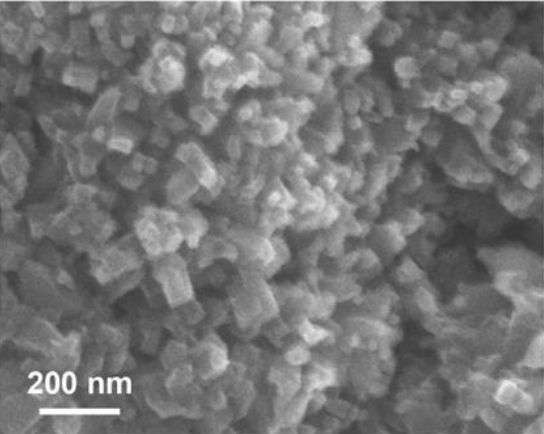August 21, 2015 report
Porous material converts CO2 into carbon monoxide and oxygen

(Phys.org)—A team of researchers with Lawrence Berkeley National Laboratory and the University of California has developed a porous material that is able to split carbon dioxide molecules into carbon monoxide and oxygen. In their paper published in the journal Science, the team describes how they developed their material and how it might be used to help remove some of the carbon dioxide in the atmosphere.
Most scientists now agree that global warming is occurring at least partly due to greenhouse gas emissions, the most notorious being carbon dioxide. And since we can't seem to stop pumping CO2 into the air, researchers are looking into ways to pull it back out. Plants, as we all know, remove CO2, but the process is slow and there aren't enough of them to offset the amount of CO2 currently emitted. As one approach to removing CO2, scientists have been studying what are known as porphyrins—ring-shaped molecules with a cobalt atom at their core. When they are added to a solution containing two electrodes, an electrolyte, and some dissolved CO2, they are attracted to the negatively charged electrolyte, carrying electrons to the CO2, causing it to split into CO and O. But there are problems—the solution is dirty and the effectiveness of the porphyrins lessens over times. In this new effort, the team found a way around these problems by creating a covalent organic framework (COF)—a material made by linking porphyrins together into a mesh—one that is also able to conduct electricity. As CO2 percolates through the mesh, it is split into carbon dioxide and oxygen by a bit of current.
The team found that the COF they developed worked much better than when using porphyrins alone, and then discovered that making the holes in the mesh bigger and adding copper improved the performance even more. The end results was a material that proved to be 60 times better at splitting CO2 than using porphyrins alone, and it was also more efficient—approximately 90 percent of the electrons were used in the process. Another plus was that the team was able to split 240,000 CO2 molecules per hour—putting it among the best at the job of any type of process.
The researchers also note that it might be possible to use their material to produce an energy source by combining the carbon monoxide produced with hydrogen.
More information: Covalent organic frameworks comprising cobalt porphyrins for catalytic CO2 reduction in water, Science DOI: 10.1126/science.aac8343
ABSTRACT
Conversion of carbon dioxide to carbon monoxide and other value-added carbon products is an important challenge for clean energy research. Here, we report modular optimization of covalent organic frameworks (COFs), in which the building units are cobalt porphyrin catalysts linked by organic struts through imine bonds, to prepare a catalytic material for aqueous electrochemical reduction of CO2 to CO. The catalysts exhibit high Faradaic efficiency (90%) and turnover numbers (up to 290,000 with initial turnover frequency 9400 hours−1) at pH 7 with an overpotential of –0.55 V, equivalent to a 60-fold improvement in activity compared to the molecular cobalt complex, with no degradation over 24 hours. X-ray absorption data reveal the influence of the COF environment on the electronic structure of the catalytic cobalt centers.
Journal information: Science
© 2015 Phys.org



















